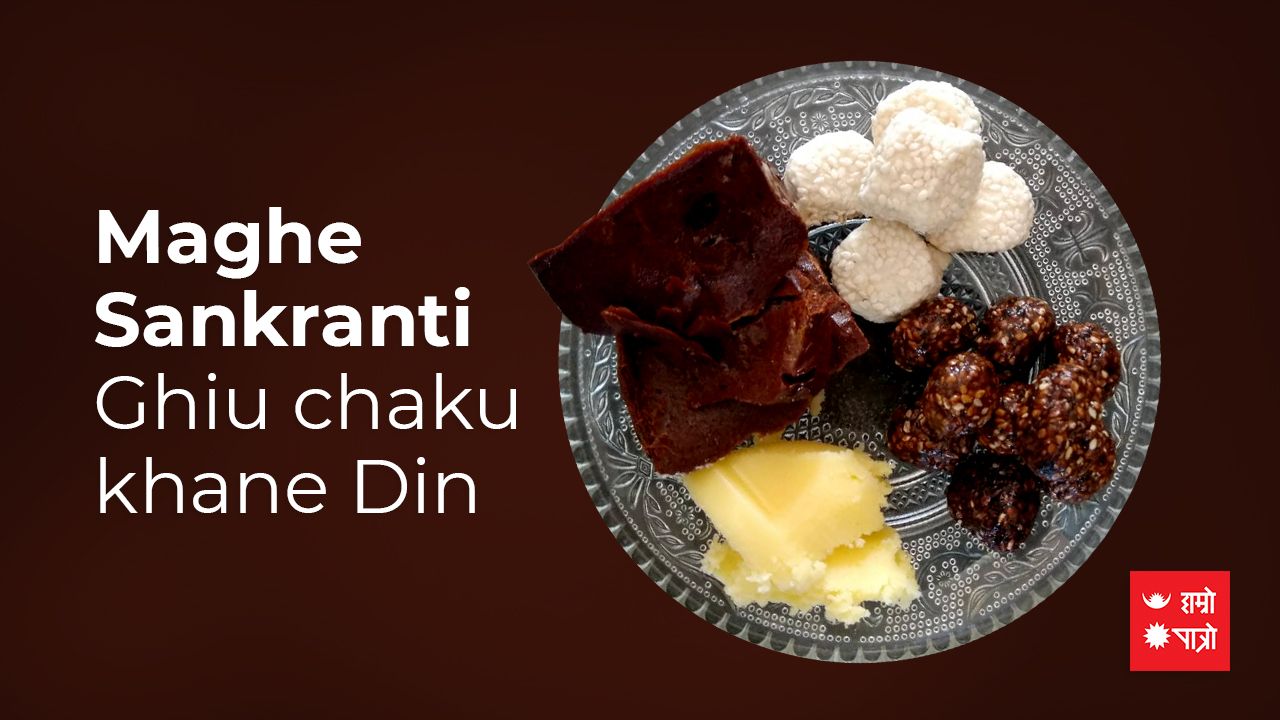
After autumn leaves disintegrate from tree branches and land on the ground! Seasons passed away yet the urge of re-growing is alive. Regrowing for the human civilization and being, re growing for the planet and welfare, and re-growing to combat the virus and adversities.
Welcome to the Maghe Sakranti of the year 2022 Ad and 2078 BS. This year is passing in hiding and seek, inside the home and outside in masks, sanitizers have completely changed the colors of our hands and the terror of this invisible virus prevails. People are so afraid of new variants such as omicron and Delta and recently the government has closed the schools for time being. May these things be normal sooner and my smile is on each face.
May this Maghe Sakranti transform the situation, today the Sun is changing its direction from Dhanu Rashi to Makar Rashi so this particular day is also called Makar Sakranti.
Today is Maghe Sakranti, the first day of the month of Magh, an important month of mid-winter. Today the Sun enters Capricorn from Sagittarius and this day is celebrated as Maghe Sakranti, Tiluwa Sakranti, or Makar Sakranti or Maghi with its characteristics and cultural significance.
Sesame has a special significance in Sanatan Sanskar, whether it is for home chanting as a charu or for worship and charity or any patriarchal and good deeds, sesame is indispensable. Today, it is famous for sesame laddu. Laddu made by frying sesame seeds and covering them in sakhkar is a special dish of today. That is why Maghe Sakranti is also called Tiluwa Sakranti.
On the other hand, we have read in geography about the North Pole and the South Pole. The direction of the Sun and Earth is also calculated and measured based on the relative positions of those poles. From today the direction of the Sun is moving towards North, It is believed to be decreasing and spring, as well as summer, is increasing. So this day is also called Uttarayan. We will come to that later.
Let's first rejoice Maghi.
Let's talk about the religious and mythological beliefs of this day. In the Mahabharata, Bhishma Pitamah who was lying in the death bed because of the Arjun's arrow, wished for death today. This day is so auspicious for salvation and spiritual gravity, that is why Bhisma who had a boon to make a wish for his death choose this day for ending his life.
Today, there are crowds of pilgrims bathing in various ghats, rivers, and shrines, Devghat of Nawalparasi, Chatara of Sunsari, Kaligandaki bank, Setiveni of Parwat, Bagmati bank of Kathmandu Shankhamul, etc.
In Madhes, Maithil and Tharu communities celebrate this festival with great harmony. In the Tharu community, this day is celebrated almost like New Year in the form of Yale Dugan.
Today, it is believed that the Kirat dynasty invaded the Kathmandu Valley and achieved victory and the same victory celebration is considered to have started as Kirat Samvat.
In the Newar community, Maghe Sankranti is celebrated with the name 'Ghuchaku Salhu'. They make laddu by mixing sesame seeds in Sakhhar and eating and donating it. Today, a historical Makar fair is held in Panauti near Kathmandu Valley, this fair started from the regime of King Mandab.
Maghe Sankranti is also a major festival of the Magar caste in Nepal. Maghe Sankranti has been recognized as the national festival of the Magars. In the Magar community, the archery game is played today. In this festival, the Magars duly worship the daughters and ancestors for three days.
May this Maghi be as sweet as the Til ko laddu, my best wishes.
The descent begins: Uttarayan Aramva
The position of the sun changes twice a year. These two changes are understood as north and south. The time when the Sun appears from Capricorn to Gemini during 6 months is called Uttarayana and the time when the Sun enters from Cancer to Sagittarius is called Dakshinayan.
During the Uttarayan, the path of the Sun's orbit is gradually moving north. According to the scriptures, Uttarayan is considered a symbol of positivity, and Dakshinayan is considered a symbol of negativity. According to the scriptures, 6 months of Uttarayan is one day for the gods and 6 months of Dakshinayan is one night for the gods.
According to mythology, people who die during Uttarayan attain salvation, while those who die during Dakshinayan must be reborn, which is why these two positions of the sun are considered the path to salvation from the human world. During theUttarayan, the days are long and the nights are short. It is considered appropriate to do special auspicious deeds like marriage, house entry, fasting, etc. in Uttarayan. Good luck everyone
Makar Snan aramva
Makar Snan has officially started by burying Lingos (bamboo poles in the bank of Devghat), the confluence of Krishnagandaki and Trishuli rivers. On the eve of Maghe Sankranti, after the bamboo linga is buried in Dobhan, the ritual of Makar Snan officially begins. Since the Sun enters Capricorn from Sagittarius on this day, this day is called Makar Sakranti and the bath starting from today is called Makar bath.
Utmost wishes, the winter is waving goodbyes and summer is all set.
Suyog Dhakal
Liked by: